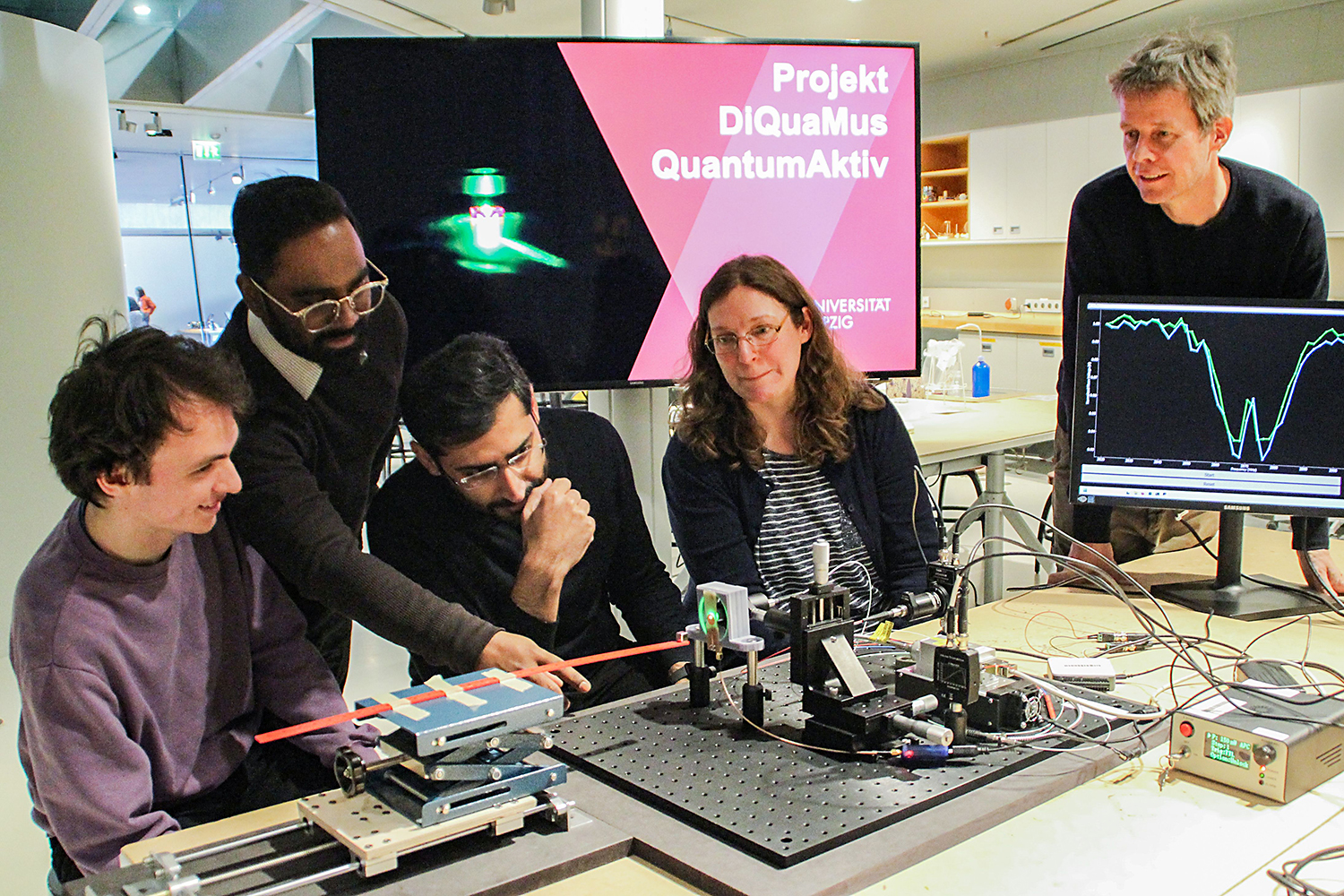Quantum technology up close Researchers develop hands-on exhibit for Phaeno Science Centre in Wolfsburg
Researchers from TU Braunschweig and Leipzig University have developed an interactive exhibit for the Phaeno Science Museum in Wolfsburg, designed to make quantum technologies more accessible to the general public. The prototype will be unveiled for the first time in Wolfsburg on 14 April to mark World Quantum Day. Developed through the collaboration of Professors Rainer Müller from TU Braunschweig and Nabeel Aslam from Leipzig University (formerly TU Braunschweig), the exhibit is part of the project Quantum Technologies in Museums: Hands-On Diamond Quantum Sensors (DiQuaMus). It is funded by the Federal Ministry of Education and Research (BMBF) under its “Quantum aktiv” outreach and innovation programme. It is funded by the Federal Ministry of Education and Research (BMBF).

Hands-on quantum technology: with this prototype, visitors to the exhibition can see how so-called nitrogen-vacancy (NV) centres in diamonds can be used as extremely sensitive quantum sensors for magnetic fields. Picture credits: Mokessh Kannah Ciwan, Leipzig University
Professor Rainer Müller: We already bring quantum physics into schools with our master classes. With the new exhibit at Phaeno, second-generation quantum technologies can now be experienced by the general public.
Interview with Professor Nabeel Aslam on the background and aims of the project. The questions were posed by Susann Silka (University of Leipzig):
What exactly is the exhibit for the hands-on exhibition at the phaeno Science Museum?
Prof. Aslam: Our exhibit brings quantum technology to life – hands-on and interactive! We demonstrate how so-called nitrogen-vacancy (NV) centres in diamonds can be used as extremely sensitive quantum sensors for magnetic fields. Visitors can experience first-hand how these quantum sensors work and what makes them so unique.
How long will the exhibit be in Wolfsburg and what can visitors to the museum do with it?
We’ve delivered the first prototype of our exhibit to the phaeno Science Museum. In close collaboration with the phaeno team, it’s now being thoroughly tested and further developed to ensure it fits seamlessly into the hands-on exhibition. The focus is not only on technical functionality and safe, intuitive operation, but also on creating an exhibit that sparks curiosity and appeals to visitors both visually and intellectually. Once the final version is complete, the exhibit will become a permanent part of the exhibition. Visitors will then have the opportunity to experiment with real quantum technology by themselves: they’ll be able to measure magnetic fields and experience first-hand how a quantum sensor based on NV centres works – in an interactive, hands-on and playful way.

At the presentation of the prototype in Wolfsburg from left to right: Fedor Kolganov, Mokessh Kannah Ciwan and Professor Nabeel Aslam from Leipzig University as well as Olga Novgorodova and Dominik Essing from the phaeno Science Museum. Picture credits: phaeno Science Museum
How did the idea for this exhibit come about, and how long did it take to develop the prototype?
The idea came to me during a visit to the phaeno Science Museum with my children. I was impressed by how complex scientific phenomena were made tangible through interactive exhibits. I began to wonder whether it would be possible to do the same with something as abstract as quantum technology. After discussions with the phaeno team and the physics education group at TU Braunschweig, it was clear: we wanted to take on that challenge together. We then successfully applied for funding through the BMBF’s “Quantum aktiv” programme, which made the project possible in the first place. Developing the prototype took about a year – from the initial concept to the first fully functional interactive station.
What will happen to the exhibit after the exhibition?
After the exhibition, we’ll explore whether the exhibit can be used at other science museums. It’s also intended for educational use in schools, where it can help make quantum physics more tangible and easier to understand.
This is your contribution to World Quantum Day on 14 April. What else is happening in Germany to mark the occasion?
World Quantum Day on 14 April refers to the number 4.14 – the rounded first digits of Planck’s constant – paying tribute to one of the fundamental values in quantum physics. Events are held around the world on this day to make quantum research accessible to the public, including in Germany, with lectures, workshops, and interactive activities. 2025 is also the International Year of Quantum Science and Technology, marking 100 years of modern quantum physics. It also celebrates the ground-breaking paper by Werner Heisenberg from 1925 – the starting point of quantum mechanics. Just a few years later, Heisenberg became a professor in Leipzig, giving the city a special connection to the history of quantum physics.
